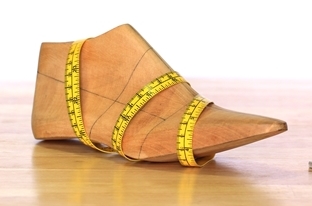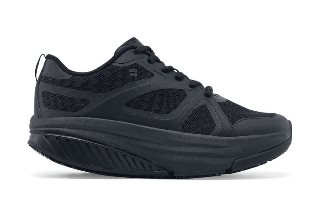Posts Tagged ‘Shoe’
Pain walking/running deviant gait – self treat &/or seek expert assistance
Experiencing pain when walking or running can be a complex problem. Asserting a hypothesis is a systematic way to solve complex problems. A hypothesis is an “if-then statement” or conditional statement which can be tested, accepted, or refuted. Hypothesis: If you have pain walking and/or running, then gait analysis to determine if there is a…
Read MoreShoe drop – how the pendulum swings
Put on your high-heel sneakers, Lordy Wear your wig-hat on your head Put on your high-heel sneakers, child Wear your wig-hat on your head Ya know you’re looking mighty fine, baby I’m pretty sure you’re gonna knock ‘em dead – Tommy Tucker Growing up in the 1960s, I remember the song, “Put on Your High-Heel…
Read MoreShoes too big for foot contributes to injury
A majority of all people are in shoes that are incorrect shoe size according to Fawn Evenson director of the Footwear Industries of America. There are two potential errors when selecting what size shoes to wear. Either the shoe will be too small for the foot or too large for the foot. In my experience…
Read MoreShoe Soles: Stiff Rocker Bottom Sole versus Flexible Sole “Barefoot”
There are many things to consider when selecting shoes, including comfort, injury and energy expenditure. Arnie Davis a Certified Pedorthotist has coined the term shoes with rocker bottom soles are the proverbial “aspirin” for chronic foot problems. A rocker sole shoe is recommended to help manage a number of painful injuries including: low back pain;…
Read MoreEvolution of the running shoe: evidence & opinion
Forty years ago there was only one running shoe designed for long distance running. Itwas a black canvas shoe shaped like a track spike shoe with a gum rubber outsole andConverse was the manufacturer. Now there is a veritable plethora of running shoes tochoose from. Ten years ago I wrote an article highlighting the fact…
Read MoreCreditability of Shoe Selection Based on Foot Print Shape and Injury Risk
Running magazines and internet shoe sales sites often recommend that the shape of the wet foot print should be used to determine which type of running shoe should be selected. There is a common belief that a foot print reflecting low arch (flat feet) should select shoes designed for “motion control”. Motion control shoes are presumed to control excessive motion…
Read More





